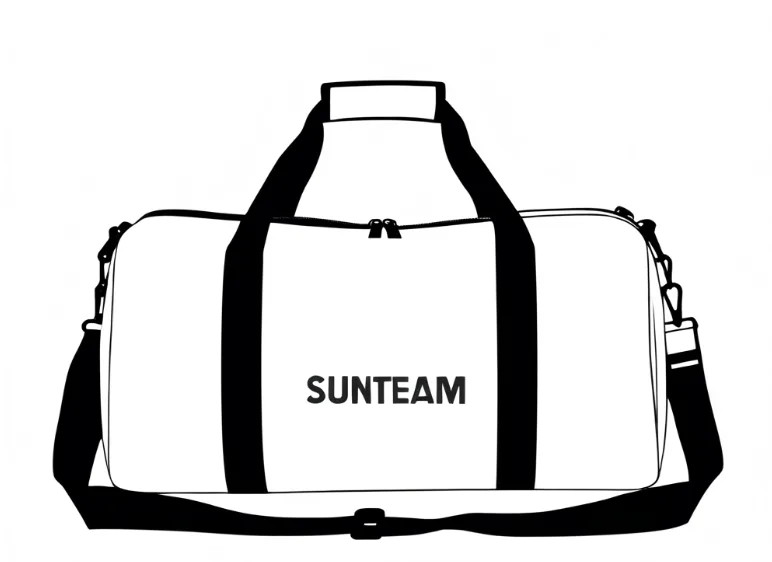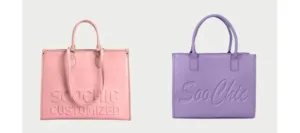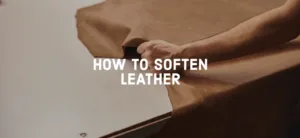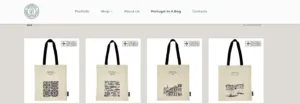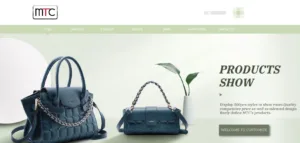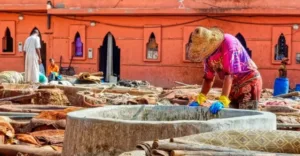When people think about a travel bag meaning, it goes beyond just carrying belongings—it reflects a lifestyle, personal taste, and even brand identity. A high-quality travel bag is not only functional but also a statement of durability and style. In today’s global market, especially with the rise of Japanese travel bag brands that emphasize minimalism and craftsmanship, consumers are paying more attention to details, comfort, and the story behind each product.
The demand for customization has grown rapidly. Businesses and individuals are seeking unique designs that showcase brand values, whether for corporate gifting, retail collections, or personal use. Choosing the best materials for premium travel bags—from sustainable leather to durable nylon—plays a key role in creating products that stand out in a competitive market.
To achieve this, working with experienced custom travel bag manufacturers is essential. They provide the expertise to transform ideas into practical, stylish, and market-ready products. This guide will walk you through the complete process, from defining your needs to collaborating with the right manufacturer, helping you design a custom travel bag that balances aesthetics, performance, and long-lasting value.
Contents
What is a Custom Travel Bag and Why Design One?
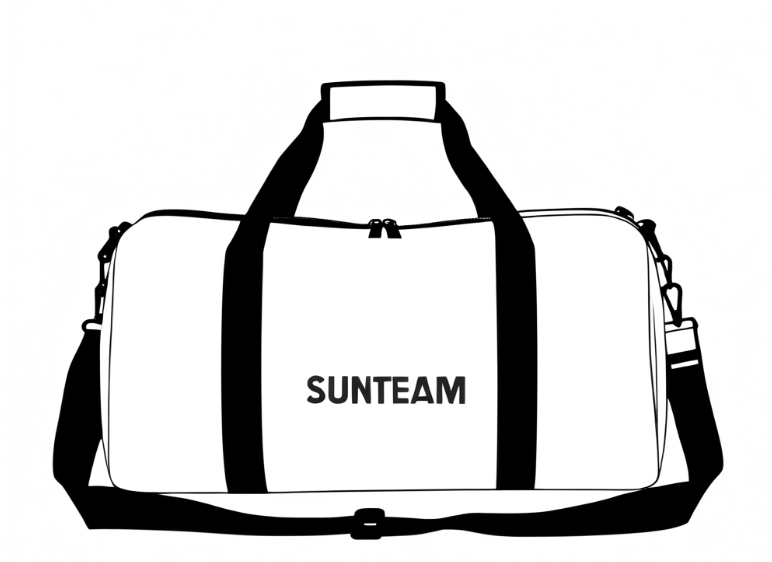
A custom travel bag is more than just a container for your belongings—it is a product designed to meet personal or brand-specific needs. You can tailor the size, compartments, materials, and branding elements to suit long trips, weekend getaways, or business travel. Custom travel bags provide both practical functionality and a unique style, helping products stand out in a competitive market while enhancing brand loyalty and value.

The evolution of travel bags shows how a simple carry accessory has transformed into a cultural symbol. From traditional canvas luggage to modern smart travel bags, designs have continuously adapted to lifestyle trends, consumer preferences, and fashion innovations.
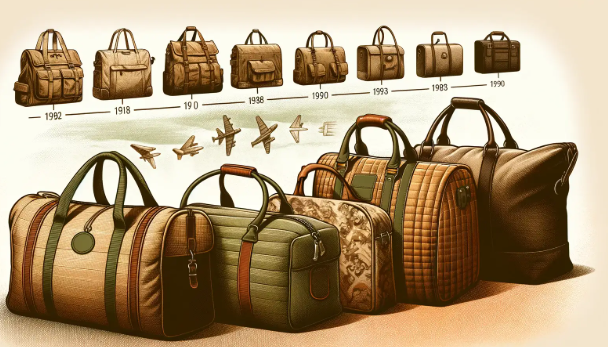
1. Historical Background and Cultural Evolution for Travel Bag
Origins and Practicality: Travel bags first appeared in the early 20th century as convenient carry solutions, focusing on durability and usability.
Fashion Integration: By the late 20th century, travel bags began to incorporate design features, including color coordination, material innovation, and ergonomic functionality.
Luxury Brand Adoption: Today, Japanese travel bag brands and international labels like Miu Miu and Loewe have elevated travel bags into stylish, high-end products. For instance, Miu Miu travel bags made in Turkey combine craftsmanship with unique design, while Loewe leather travel bag suppliers emphasize premium leather and luxury finishing.
2. Travel Bag Terminology and Functional Evolution
Travel Bag: A general term emphasizing purpose and portability.
Carry-on / Luggage / Backpack / Diaper Travel Bag: Differentiates usage scenarios; a diaper travel bag meaning reflects multifunctional storage for parents on the move.
Trend Evolution: Brands often mix terminology—such as “smart travel bag” or “weekender bag”—to target specific consumer searches and broaden market reach.
3. Defining Custom Travel Bags
Design Element Customization: Bag shape, compartment layout, zipper and hardware color, strap length, and closure types can all be tailored.
Material Selection: Choose from the best materials for premium travel bags, including durable nylon, high-quality canvas, full-grain leather, or sustainable vegan alternatives.
Hardware Choices: Zippers, D-rings, metal buckles, and sliders can be selected to match aesthetic preferences.
Branding and Decoration: Embossed logos, woven labels, custom patches, and printed lining reinforce brand identity at every touchpoint.
Small-Batch Customization: Customization is not only for large brands. Modern custom travel bag manufacturers allow low MOQ production, making it feasible for small batches and controlled initial investment.
4. Market Trends Driving Customization
Personalization Culture: Millennials and Gen Z consumers prefer products that tell their story. A custom travel bag with personalized colors, initials, or unique compartments caters to this demand.
Niche Market Focus: Different users have different needs—business travelers may require laptop compartments, adventurers want waterproof sections, and parents seek easy-access diaper compartments. Standard solutions rarely cover all scenarios.
E-Commerce and Social Influence: Limited-edition custom travel bags create scarcity, drive social media buzz, and generate pre-order revenue, reducing financial risk. Evaluating consumer goods companies like Yeti on cooler travel bags shows that strong branding combined with functional innovation can dominate niche markets.
How Do You Create and Refine Your Custom Travel Bag Design?
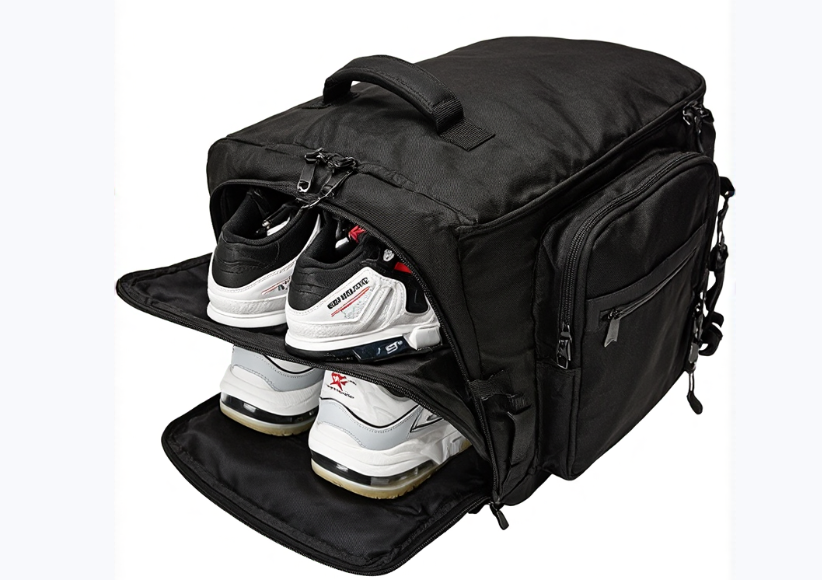
Designing your own custom travel bag allows you to combine functionality, style, and personalization in one product. From practical compartments to aesthetic details like colors and logo placement, a custom bag meets your unique travel needs. Choosing the best materials for premium travel bags, working with a trusted OEM travel bag factory, and exploring Japanese travel bag brands ensures your design is both high-quality and stylish.
The following guide walks you step by step through defining your purpose, selecting materials, designing features, and working with manufacturers to bring your custom travel bag from concept to reality.
Step One – Define the Purpose of Your Custom Travel Bag
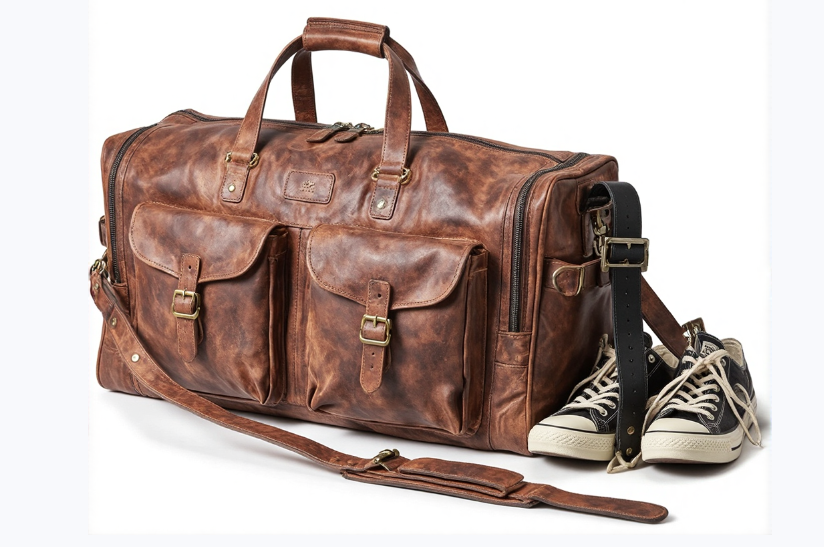
Target Audience: Business travelers, outdoor enthusiasts, family travelers, etc., defining the design style and functional requirements for each group.
Usage Scenarios: Long trips, short business trips, or daily commuting—each scenario influences size, compartment layout, and portability.
Capacity and Functional Needs:
Luggage space: Main compartment size customized based on trip length.
Compartments: Laptop sleeves, shoe pockets, waterproof sections, etc., for organized storage.
Special features: Anti-theft zippers, USB ports, or expandable sections based on user preferences.
Keyword Integration: Evaluating where are travel bags produced can help determine suitable manufacturing partners for different markets.
Step Two – Choose the Right Bag Materials

Common Material Options: Canvas, nylon, leather, vegan leather, and recycled fabrics—each has different durability, weight, and texture characteristics.
Durability vs. Weight: Select lightweight yet sturdy materials to improve travel convenience while ensuring long-term use.
Sustainability: Consider eco-friendly options such as recycled fabrics, low-carbon leather, or vegan leather travel bag supplier materials.
Material Comparison Table (Example):
| Material | Durability | Water Resistance | Price Range |
|---|---|---|---|
| Canvas | Medium | Medium | $2 – $20 |
| Nylon | High | High | $7 – $19 |
| Leather | High | Medium | $2.50 – $3.50 |
| Vegan Leather | Medium | Medium | $2.50 – $3.50 |
| Recycled Fabric | Medium | Medium | $2 – $19 |
Step Three – Decide on the Style and Features
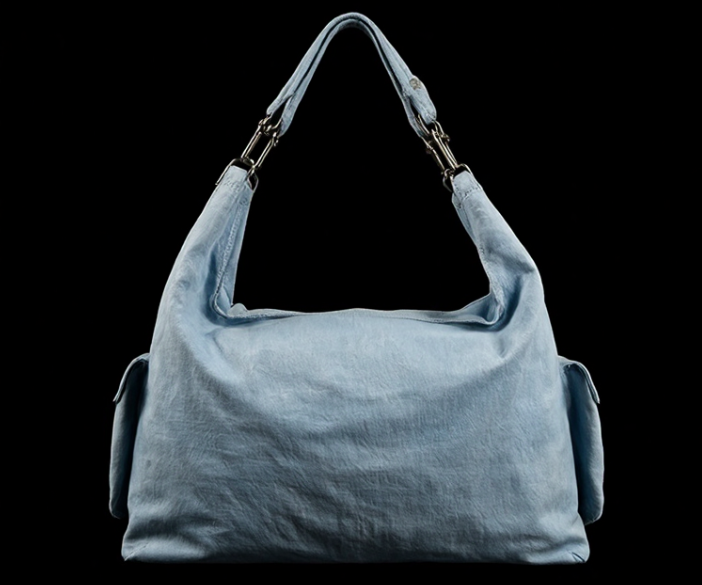
Bag Types: Backpack, suitcase, tote bag, crossbody bag, Duffel Bag—selected based on user needs and travel scenarios.
Functional Details:
Travel bag’s Multiple compartments for organized storage.
Travel bag’s Expandable zippers to increase capacity.
Travel bag’s Anti-theft zippers for security.
bag’s USB ports for charging devices on the go.
Appearance Design: Color, prints, embroidery, and logo placement to balance branding and aesthetic appeal.
Keyword Integration: Understanding the mesh travel bag meaning can guide design for breathable compartments or lightweight travel bags.
Step Four – Work With a Reliable Manufacturer
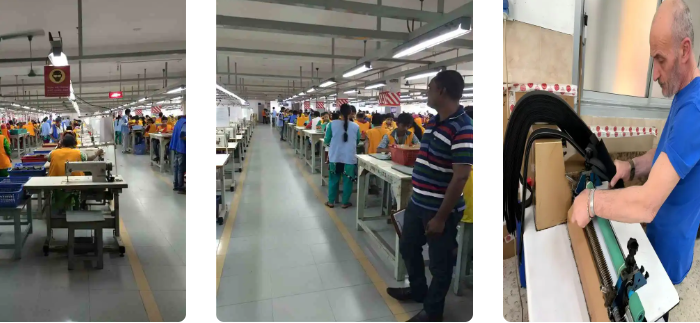
Key Considerations: Production capacity, minimum order quantity (MOQ), and sample approval process.
OEM vs. ODM: OEM produces according to client’s bag design; ODM provides full design and manufacturing solutions.
Example: Sunteam Factory
Bangladesh bag factory guided by an Italian bag technical team.
600+ skilled workers, monthly production capacity of 100,000 units.
Specializes in travel bags and leather accessories customization.
Welcomes brand inquiries and collaborations.
Keyword Integration: Look for OEM travel bag factory or luxury handbag travel bag OEM manufacturer wholesale to match your brand scale.
Step Five – Sampling and Prototyping
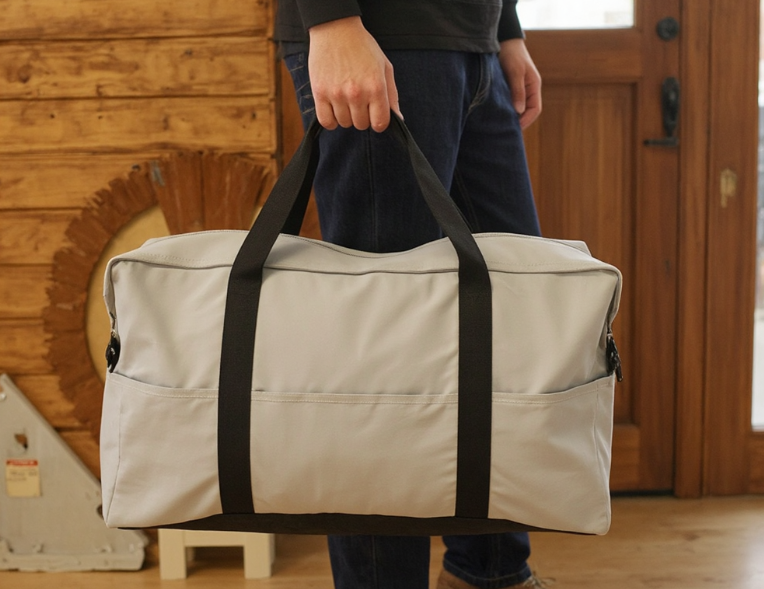
Importance of Samples: Verify design, function, and materials; catch issues before mass production.
Feedback and Adjustments: Evaluate size, zippers, hardware, and color; refine design based on sample testing.
Verification: Ensure all functional and brand elements align with expectations before starting bulk production.
Keyword Integration: Check are travel bags made in Vietnam or where is travel bag made to understand sourcing and production quality.
Step Six – Pre-Production Confirmation and Preparation
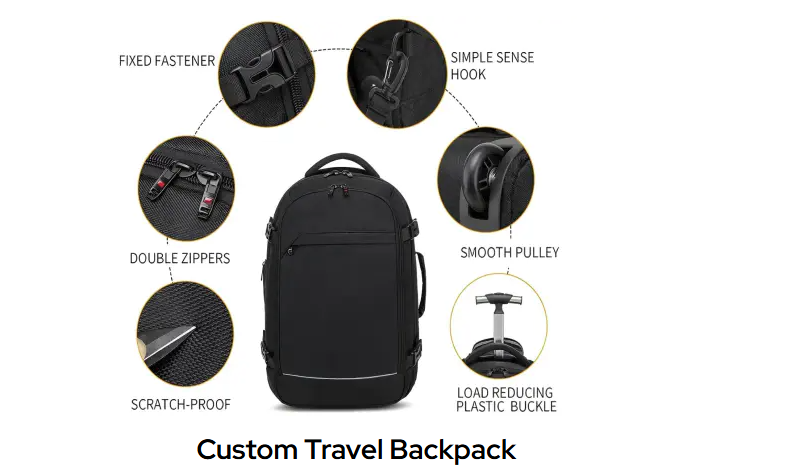
Design Confirmation: Shape, compartment layout, zipper and hardware colors finalized.
Material Confirmation: Outer shell, lining, decorations, and eco-friendly materials meet specifications.
Branding and Decoration: Embossed logos, woven labels, or printed lining verified for quality and consistency.
Production Preparation: Ensure clear production workflow and factory understanding of all design requirements to minimize errors.
Keyword Integration: For specialized products, evaluate China slim travel bag factory or Russian travel bag manufacturers to match your target market.
How Do You Bring Your Custom Travel Bag to Market?
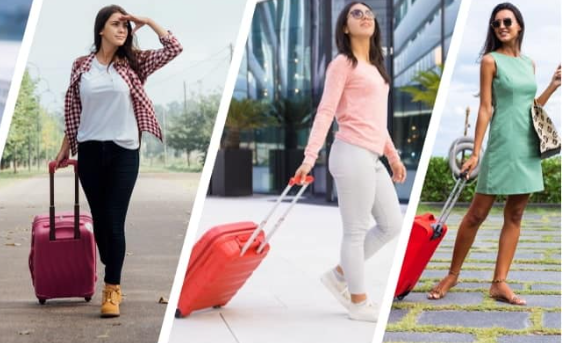
Through the six steps outlined above, we can design and produce a travel bag collection that combines functionality, style, and high quality—meeting customer needs and attracting market attention. However, having an excellent product is only half the battle. To ensure your custom travel bag stands out in a competitive market, a comprehensive marketing strategy is essential.
According to a 2024 report by Grand View Research, the global luggage market is expected to reach $43.7 billion by 2030, growing at a CAGR of 6.2%, highlighting the strong demand for innovative and personalized travel products. First, define your unique selling points, such as modular compartments, durable materials, or multifunctional designs, which can help differentiate your products from competitors like high-end smart travel bag suppliers or specialized carry-on luggage manufacturers.
Sales Channels:
E-commerce: Platforms such as Amazon, Shopify, and travel-focused online stores offer direct access to millions of potential buyers. Data shows that over 60% of global travelers research and purchase bags online.
Retail partnerships: Boutique stores and travel specialty shops can enhance brand credibility and visibility. Limited-edition collaborations or exclusive designs with premium travel bag brands can create scarcity and increase profit margins.
Marketing Strategies:
Emphasize storytelling by showcasing design inspiration, craftsmanship, and practical benefits.
Leverage influencers and micro-influencers in travel, lifestyle, and outdoor niches.
Offer virtual demos or 360° product views; research shows that interactive content can increase purchase intent by up to 70%.
Finally, continuously monitor customers’ travel bag feedback and market trends to refine future collections and promotional strategies. By combining high-quality production with strategic positioning and data-driven marketing, your custom travel bag can successfully reach consumers, build brand loyalty, and achieve both sales and reputation growth.
Conclusion
Designing a custom travel bag is not just about style and functionality—it’s a strategic way to enhance your brand’s product portfolio and offer unique value to your customers. A well-executed custom bag can strengthen brand recognition, differentiate your offerings, and drive business growth in a competitive market.
Partner with a reliable travel bag manufacturer to produce high-quality, customizable products that align with your brand requirements.
Contact Sunteam today to explore tailored travel bag solutions, including material selection, design customization, and scalable production for bulk travel bag orders.
By working with an experienced manufacturer, your brand can deliver travel bags that meet market demands, maintain consistent quality, and maximize ROI for B2B sales.

